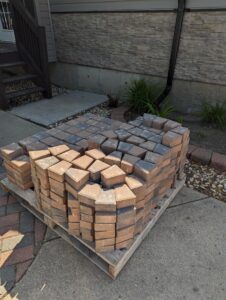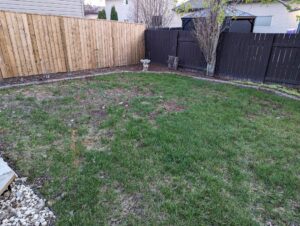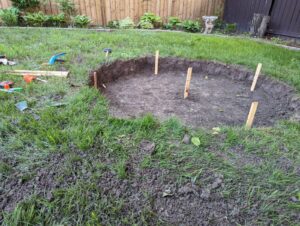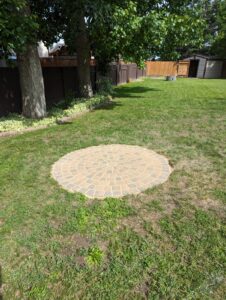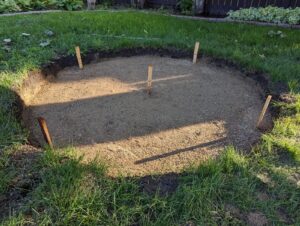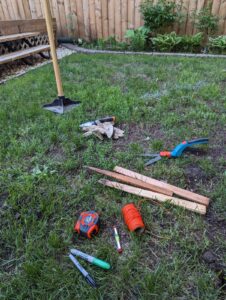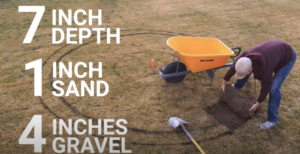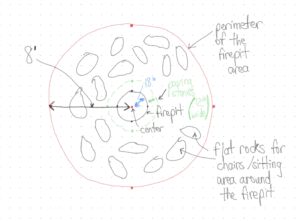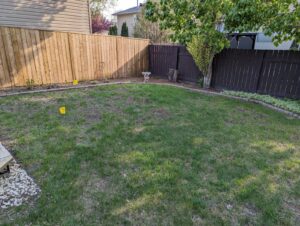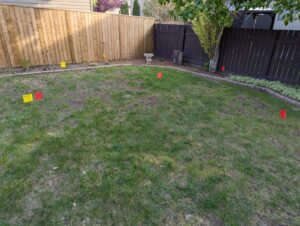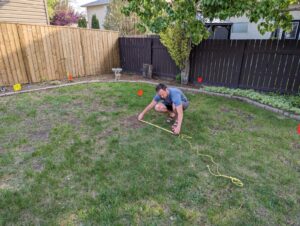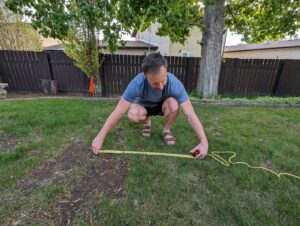When I originally thought of landscaping a portion of my backyard to create a surface of patio stones for a firepit, I had concerns that it might be too simple and straightforward. “How hard could it really be?” was a question that I replayed over in my mind for about a week’s time. However, I quickly found out this was not the case! Landscaping is hard work!!! And more to the point, it requires immense attention to detail, while also being physically challenging at the same time. What I also came to realize was how unique my project was in its own way because I didn’t have much opportunity for “redo’s”. Creating an entertaining area by laying paving stones is a one-and-done deal. It’s difficult to go back and fix or try again if it’s not done right the first time. Therefore, I often found myself quadruple checking online and using social media in countless ways to ensure I was on the right track.
Throughout this learning project, I accessed countless social media platforms: Instagram, Pinterest, and TikTok to name a few. However, YouTube ended up being the most reliable and easy to follow (somewhat of a go-to) platform to get content and information for my project. I found that it was a ‘one-stop-shop’ for what I specifically needed: a good variety of amateur vs expert content, short and sweet videos if I needed a quick answer, long and detailed videos for the times I needed to see every aspect of the project through to completion, visuals that could be easily paused and replayed, comments and replies from people who had viewed and used the videos to help with their own DIY projects, and no ads (thanks so uBlock origin and AdBlock). For a project like this, I found YouTube to be the ideal social media platform and I would highly recommend it for anyone taking on their own backyard or house-related project.
Special shout-out to the following videos/resources for being my most frequent ‘go-to’s’ when I hit a roadblock:
- This Old House – How to Install Concrete Pavers
- PavestoneCompany – Pavestone Paver Installation
- Bro Builds Patio Firepit
- 10-Step Guide to Installing Pavers
Countless steps and new learnings went into this project, which included things such:
- Creating a rough sketch of the final layout and measuring the dimensions of the area that was going to be landscaped
- Getting line locates completed, courtesy of SaskPower, SaskEnergy, and SaskTel
- Understanding City of Regina bylaws regarding Firepit Regulations
- Properly measuring, grading, and prepping the area to prepare for digging/excavation
- Digging to an appropriate depth (7-9” below ground) to prep for the base layer
- Creating the base layer using gravel/crusher dust (approximately 80 gallons of crusher dust were poured and tamped down for my project)
- Leveling the base layer before adding 1” of sand throughout the area
- Laying the paving stones in the desired pattern
- Tamping and compressing the paving stones
- Adding sand and sweeping it into the cracks to help seal the stones into place
Overall, between researching, planning, and carrying out my project, I probably spent 40-50 hours on this project. And my firepit area isn’t even that large! Many of the projects that I watched on YouTube had a 8-10’ diameter circular paving stone area, and mine was only 6’ (although most videos I watched had 2 people working on the project, whereas I did almost everything on my own with very little help from my husband). Perhaps I was too thorough with some aspects of my project, but since there weren’t many opportunities for re-do’s, I wanted to ensure it was done properly and thoroughly the first time.
I have taken away so much amazing learning from this project. First off, landscaping is extremely hard work! I have a new-found appreciation for anyone who does landscaping or DIY projects around their yard. It requires a significant amount of planning and coordinating before starting the project. I’m glad I did my due-diligence with researching because at one point I was tempted to just start digging…that would’ve been a mistake that would’ve been tough to fix! Secondly, I didn’t know that each step of the process (digging, base layer, sand, paving stones) had to be so precisely measured and completed. I found myself measuring, remeasuring, and then measuring again before I picked up the shovel to ensure I had my plans right. Lastly, this project has helped reaffirm for me the value of social media, in general. The amount of content across the countless platforms is truly overwhelming (as in ChatGPT-capabilities type of overwhelming). There is truly something for everyone and everything: you just have to be willing to put in the time to find the stuff that’s right for you!
Learning online to complete this project definitely came with its fair share of challenges. Watching hours of videos and sorting through various resources that may or may not be useful eventually lost its fun, but it was more than worth it to have found the resources that were applicable and of value to me. Overall, it was an incredible and rewarding experience. To be able to look at our landscaped firepit area and enjoy it for years to come is honestly priceless! Knowing that I completed it (almost) all on my own is such an amazing feeling. I don’t like running, but perhaps this is what it feels like to have just finished running a marathon. The best part is that it’s an area that will be used for entertaining friends and family throughout the summer months when it’s time to kick back and relax!
Thanks so much for following along with my learning project. Here is one last video showing the final stages and eventual completion of my project (sped up 20x to save you from watching a 4-hour video). Enjoy!
Audio credit from the video:
9 to 5 – Dolly Parton
Takin’ Care of Business – Bachman-Turner Overdrive
Manic Monday – The Bangles
Work From Home – Fifth Harmony
